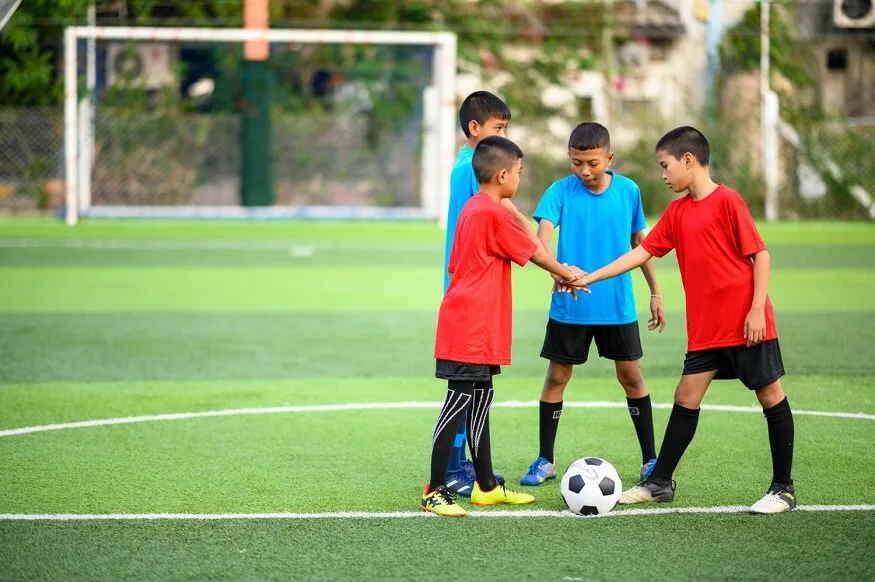A vast range of emotions, behaviours, and reactions are included in the fascinating and intricate topic of how kids act. Every child is different from the next in terms of temperament and personality, which affects action. Children’s behaviour reflects their ever-changing comprehension of the world around them, from times of limitless curiosity and joy to sporadic expressions of irritation or resistance. Parents and other carers can assist in mould and direct children’s behaviour via observation, direction, and consistent boundaries. This helps develop traits like empathy, self-control, and resilience. Comprehending and fostering children’s conduct is an ongoing process that involves tolerance, compassion, and a profound regard for their uniqueness.
Understanding whining in children is crucial. Kids whine for reasons like seeking attention, fulfilling needs, or expressing themselves. Hunger, fatigue, boredom, and frustration are common triggers. It’s their way of communicating when language and social skills are developing. Recognizing these triggers helps parents respond empathetically and patiently.
Also Read: Parenting Tips for kids with ADHD: Do’s and Don’ts
Why Children Whine
Understanding the reasons behind whining is the first step to addressing it. Children whine for various reasons, primarily because it’s a highly effective way to get attention or meet a need. They may whine when they are hungry, tired, bored, or frustrated. At times, it’s merely a reflection of their growing independence and desire to express themselves. Recognizing the triggers for whining is essential in dealing with it effectively. By understanding that whining is often a form of communication for children who haven’t fully developed their vocabulary or social skills, you can approach the issue with more empathy and patience.
Also Read: Moral Values for Students That Help Build a Good Character
How to Stop the Whining?
It’s a desire that parents and kids alike have: getting to stop the whining. The following tactics will assist you in achieving it:
- Empathise and Listen: Sometimes, children whine because they want to feel heard. Take a moment to listen to their concerns and offer empathy. It can help them feel understood and reduce their need to whine. Acknowledging their feelings and concerns can make them more willing to communicate their needs without whining.
- Develop Unambiguous Expectations: Make sure your child understands your expectations and the rules. They will not complain as much if they know what is and is not acceptable. For instance, explain to them that using their words instead of moaning is a more effective method to communicate.
- Offer Choices: Providing your child with choices within set boundaries can give them a sense of control and stop the whining. For instance, ask if they want to wear the red shirt or the blue one, allowing them to make decisions within the options you provide.
- Praise Positive Behaviour: Encourage and praise your child when they communicate without whining. Positive reinforcement goes a long way in modifying their behaviour. When they express themselves effectively, recognize their effort and reward them with positive feedback.
- Establish a Routine: A predictable routine can help children feel more secure and help stop the whining caused by disruptions or uncertainty. Children often whine when they feel anxious or unsure, so creating a structured routine can alleviate this.
- Teach Problem-Solving: Help your child learn how to articulate their needs or frustrations and suggest ways to solve their problems constructively. Instead of whining, encourage them to use words to express their concerns and problem-solve together.
- Limit Exposure to Whining: Avoid letting your child watch TV shows or videos where characters whine, as this can inadvertently encourage the behaviour. By controlling the media they consume, you can minimise their exposure to whining as a modelled behaviour.
By implementing these strategies on how to stop the whining, you’ll be better equipped to curb whining while fostering healthy communication skills in your child.
Also Read: Simple Steps to Dealing with Two Year Old’s Temper Tantrums
How to Handle Whiny Child in Public
Handling whining in public can be particularly challenging as it often triggers embarrassment and frustration. Try these strategies to navigate this situation:
- Stay Calm: Keep your composure and avoid reacting to the whining with anger or frustration. Children can often pick up on your emotions, and responding calmly can prevent the situation from escalating. Take a few deep breaths to remain patient.
- Acknowledge Privately: If possible, take your child aside to discuss the issue privately rather than addressing it in public. This reduces embarrassment and potential power struggles. By speaking to them privately, you maintain their dignity and avoid embarrassment, leading to a more constructive discussion.
- Offer Distractions: If the whining is triggered by boredom or frustration, try to distract your child with a small toy or engaging activity. Distraction can help shift their focus and alleviate the immediate cause of whining.
- Set Expectations: Before entering a public setting, remind your child about the behaviour you expect. This proactive approach can prevent whining episodes. Let them know that they should communicate their needs without whining.
By employing these techniques, you can manage how to handle whiny child episodes in public effectively while helping your child understand the expectations for behaviour in various situations.
Also Read: Dealing with Scared Kids: Common Fears and Strategies
How to handle whining in preschoolers
Preschooler whining is notorious, which can be attributed to their emerging independence and limited communication skills. It’s a normal part of their development as they begin to test boundaries and express themselves. To handle whining in preschoolers, use a combination of patience, consistent rules, and positive reinforcement. Remember that whining often stems from frustration or unmet needs. If your child is tired, hungry, or overstimulated, address those issues first. Encourage them to use their words to express themselves and praise their efforts. Stay consistent with your response to whining, and over time, your preschooler will likely outgrow this behaviour as they develop better communication skills. Be patient and consistent as they learn to express themselves more effectively.
Why Whining Shouldn’t Be Encouraged
While it’s natural for children to whine occasionally, it’s essential not to encourage this behaviour. Giving in to whining by meeting their demands reinforces the idea that whining gets results. This can set a problematic precedent, leading to more frequent and intense whining. Encouraging whining hampers effective communication development. Maintain a balance of empathy and firmness to teach your child that whining isn’t the way to get what they want. Teaching them that using words to express themselves is more effective and respectful.
Also Read: Dealing with Hyperactive Kids
Seeking Professional Help
Persistent or escalating whining might signify underlying concerns like anxiety or developmental challenges. If you’re worried about ongoing whining, consult a paediatrician or child psychologist. They can assess potential issues and offer strategies or interventions. This proactive approach ensures your child’s emotional development and well-being.
Dealing with how to handle whining in children can be challenging, but it’s a phase that, with patience and consistent strategies, can be navigated successfully. Remember that whining is often a temporary developmental stage, and by responding calmly, teaching better communication skills, and setting clear expectations, you can help your child outgrow it. By implementing these strategies, you can encourage healthier ways of expressing needs and frustrations, ensuring your child develops effective communication skills for the future. Handling whining can be a valuable learning experience for both you and your child, fostering a closer, more understanding relationship.
EuroSchool understands the challenges that whining behaviour poses for parents and caregivers when it comes to children. Recognizing the importance of fostering positive communication and emotional development, EuroSchool provides valuable guidance on dealing with and overcoming preschooler whining. With a focus on empathy, active listening, and establishing clear boundaries, EuroSchool equips parents and caregivers with effective strategies to address whining behaviour. By creating an environment that encourages healthy expression of emotions and teaching problem-solving skills, EuroSchool supports families in nurturing positive relationships between parents and children. Through their expertise in child development, EuroSchool offers practical solutions that empower parents and caregivers to navigate and win over whining behaviour, creating a harmonious and supportive environment for children’s growth and development.










